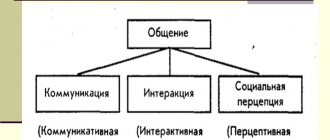Certain circumstances, misunderstandings, and a negative attitude towards the interlocutor lead to conflict.
This incident happens to everyone and it is a natural process that occurs in different life situations.
Experts highlight both the pros and cons of the conflict. There are many consequences to such incidents that you should be aware of.
You will find recommendations for correcting the hyperthymic type of character accentuation on our website.
Constructive functions of conflict
Among them are:
- Cognitive. The emergence of a conflict situation is a symptom of dysfunctional relations between subjects, a manifestation of emerging contradictions.
- Developmental. It is conflict that acts as a tool for resolving emerging contradictions.
- Instrumental. Contradictions act as a tool for solving problems.
- Perestroika. With the help of conflict, it is possible to remove factors that undermine interpersonal interactions, which stimulates the formation of normal relationships between participants in the dialogue.
Signs
Main signs of conflict:
- the presence of circumstances that the parties consider to be conflicting,
- the presence of inconsistency, contradictions in the views, goals, interests of the parties,
- conflict interaction between participants,
- the use of various methods of pressure on opponents (including physical and mental violence),
- results of conflict interaction.
As a rule, conflict situations do not exclusively benefit the parties, and much depends on the specific conflict and the individual characteristics of the participants.
It is also important to consider that each of the participants and observers is able to assess the conflict and its outcome differently.
Advantages and disadvantages
Let us highlight the positive functions of conflict. These include reducing tensions between warring parties. Conflict makes it possible to obtain new information about the opponent. The company's team is united in the fight against one external enemy.
Among the advantages of conflict situations, one can also note stimulation for development and change, elimination of the submissive syndrome in subordinates, and diagnosis of additional opportunities.
With the right approach to the problem that has arisen, you can determine the causes of the problem, eliminate them, and move to a new level of relationship.
Now let's highlight the negative functions of conflict. They involve significant emotional and material costs from all participants. The result of contradictions is the dismissal of employees, a decrease in the psychological and social climate in the team, and a decrease in labor discipline.
Based on the results of the conflict, an idea is formed about the defeated subjects, as well as about their opponents (“enemies”).
The negative functions of conflict have a destructive effect on cooperation between individual team members; it is quite difficult to restore business relationships after a problematic situation.
Conflict resolution
The positive meaning of conflict is to come to some kind of agreement. This can be achieved through conflict prevention. For example, you need to have a simple conversation, list the topics of concern, explain your requirements and assume the results.
Note! The main goal of the conflict is to find a compromise, a result that would satisfy all participants in this phenomenon.
Many people use the method of avoiding conflict, knowingly agreeing with their opponent, but in reality they either remain unconvinced or submit. Giving in, sacrificing your interests is an attempt to smooth out a controversial situation. It is used when a person feels that he is wrong, or knows that arguing is useless, perhaps due to a lack of power, perseverance to prove that he is right.
A conflict of interests is usually viewed as an aggressive dispute, the imposition of one’s opinion in order to break the opponent and defend one’s point of view. In fact, conflict is a way to convey your thoughts to your interlocutor, listen to his side, and then come to a common result. Correct resolution of conflict contributes to progress, growth of a person and society, but a negative approach can aggravate the situation and destroy relationships.
Elements and structure of interpersonal conflict
A systematic study of conflicts made it possible to identify individual elements in them:
- subjects with their personal characteristics, goals and motives;
- supporters of the situation;
- the reason for the controversy.
Conflict functions characterize the connections between individual elements. Since the components of contradictory relationships systematically change, we can talk about the constant development of the conflict.
It can cause dissatisfaction and a decrease in labor efficiency, and cause unproductive competition with other people considered as hostile groups.
The strengthening of such qualities leads to the fact that instead of solving a specific problem, significant importance is attached to achieving “success” in the current conflict. It not only weakens communications, but also causes the destruction of business relationships.
Negotiation
Negotiation is one of the most common conflict resolution strategies. With the help of negotiations, both micro-conflicts (in families, organizations) and macro-level conflicts are resolved, i.e. conflicts on a global and national scale.
Basic human actions with the “Negotiations” strategy
- Focus on finding a mutually beneficial solution
- Stopping any aggressive actions
- Showing attention to your opponent's position
- Carefully consider next steps
- Using an intermediary
Pros and cons of the Negotiation strategy
The Negotiation strategy allows the warring parties to find a common language without incurring any losses. It is very effective because... neutralizes aggressive confrontation and smoothes out the situation, and also provides the parties with time to think about what is happening and search for new solutions. However, if negotiations suddenly drag on for some reason, this may be perceived by either party as avoiding the conflict or unwillingness to solve the problem, which may lead to even more aggressive offensive actions.
You should choose a strategy for behavior in a conflict as thoughtfully, consciously, and taking into account the specifics of the situation itself. A correctly chosen strategy will give maximum results, while an incorrectly chosen one, on the contrary, can only aggravate the situation. Therefore, once again carefully study this material and try to apply the acquired knowledge in practice even in small things, because by learning to resolve small conflicts, you will be able to effectively influence large ones. And remember that it is best to prevent the emergence of a conflict situation than to eliminate an already “raging flame.”
Peace to your home!
We also recommend reading:
- Storytelling
- Game theory: history and application
- Conflicts and strategies for dealing with them
- Thomas Questionnaire for Behavior in Conflict
- IBR Conflict Resolution Approach
- Eldred's Power Strategy
- Negotiation Matrix
- Porter's Five Forces in Business
- How to competently enter into conflict
- Mintzberg's 5 Ps Strategy for Business Strategy
- How to Deal with Conflicts of Interest
Key words:1Communication
Specifics of destructive functions
The negative functions of social conflict are that contradictions interfere with achieving goals. Destruction leads to the following consequences:
- dissatisfaction, poor morale, staff turnover, deterioration in the quality of work;
- a decrease in the degree of cooperation in the future, the destruction of the system of established communications;
- absolute devotion to the group and unproductive competition with other parts of the team;
- perceptions of the other side of the conflict as an enemy;
- complete termination of relations between the parties;
- increasing hostility between groups, the emergence of hostility and hatred between them;
- shifting emphasis;
- the possibility of preparing for the next round of conflict, a violent solution to the emerging problem.
Device
Adaptation as a way of behavior in a conflict is characterized by the fact that the subject is ready to put his needs, desires and interests into the background and make concessions to the opponent in order to prevent confrontation. This strategy is often chosen by people with low self-esteem, insecure and who believe that their position and opinion should not be taken into account.
Basic human actions with the “Adaptation” strategy
- Constant agreement with the opponent’s demands to please him
- Active demonstration of a passive position
- No claim to victory and resistance
- Flattery, pandering to the opponent
Pros and cons of the Accommodation strategy
In the event that the subject of the conflict is not particularly important, and the main thing is to maintain constructive interaction, allowing the person to gain the upper hand, thereby asserting himself, can be the most effective way to resolve the conflict. However, if the cause of the conflict is something significant, something that affects the feelings of all people involved in the conflict, then such a strategy will not bring the desired result. In this case, the result will be only negative emotions of the one who made concessions, and all trust, mutual understanding and respect between the participants may completely disappear.
3
Typology of conflict
Taking into account the organization of society, the formation of conflict situations occurs at a certain level:
- between individuals;
- in groups;
- large subsystems or systems;
- states.
In social psychology, the following types of conflicts of an individual are distinguished. In this case, acute negative experiences of a person arise, which are generated by conflicting desires.
For example, in Freud's psychoanalysis such a conflict is seen as the result of a contradiction between moral feelings, instinctive impulses, and real demands. By their nature and content, such situations are caused by contradictions of motives, interests, and self-esteem of the individual. They are accompanied by negative experiences and serious emotional stress.
Interpersonal conflict can be constructive or destructive, leading to positive or negative consequences for an individual.
It can be based on various reasons:
- contradiction of basic needs;
- difficulty choosing between different behavior options.
The functions of political conflicts are associated with serious misunderstandings between government bodies and structures.
An example of such conflicts is the armed invasion of one state into the territory of another country. The reasons that lead to such situations can be different:
- desire to master material and natural resources;
- thirst for exploration of new territories;
- an attempt to prove your advantage over your rivals.
Possible consequences
The end result of a controversial situation can lead to positive or negative consequences. The positive consequences of conflict include progress, growth of an individual or an entire organization. They contribute to a clear formulation of the interests and goals of an individual or company. Participants in a conflict of interests feel involved and useful in solving a task or problem.
Negative consequences destabilize the organization, destroy relationships, weaken further cooperation and communication. Along with emotionality, hostility and mistrust are growing.
Sometimes a showdown requires a third – neutral participant
Characters
Conflict participants are parties directly involved in the formation and completion of a conflict of interests. There are 2 types of actors: indirect and direct participants in the conflict.
Indirect ones include:
- Provocateur. A person (state, group, society) who provokes another person into a conflict, while in some cases not taking part in the conflict situation itself.
- The provocateur's ally, or "support group." A person who contributes (materially, morally) to the development of a collision.
- Organizer (creator) of the conflict.
- Judge (mediator, intermediary). A person who is a third party in a conflict situation.
Direct ones include:
- The instigator. Sometimes it is a provocateur.
- Subject.
- Sides of the collision.
What not to do during settlement
It is worth remembering that excessive emotionality can only aggravate the current situation, and calmness and coldness in the voice will allow the conflict to be resolved more quickly. To resolve any conflict, restraint and respect for the opponent are necessary, no matter from what side he shows himself. It is important to know that negativity in response to negativity can escalate a psychological conflict and make it practically unsolvable without additional help.
A conflict situation requires a special approach; its resolution must be completed, otherwise it may arise again.









